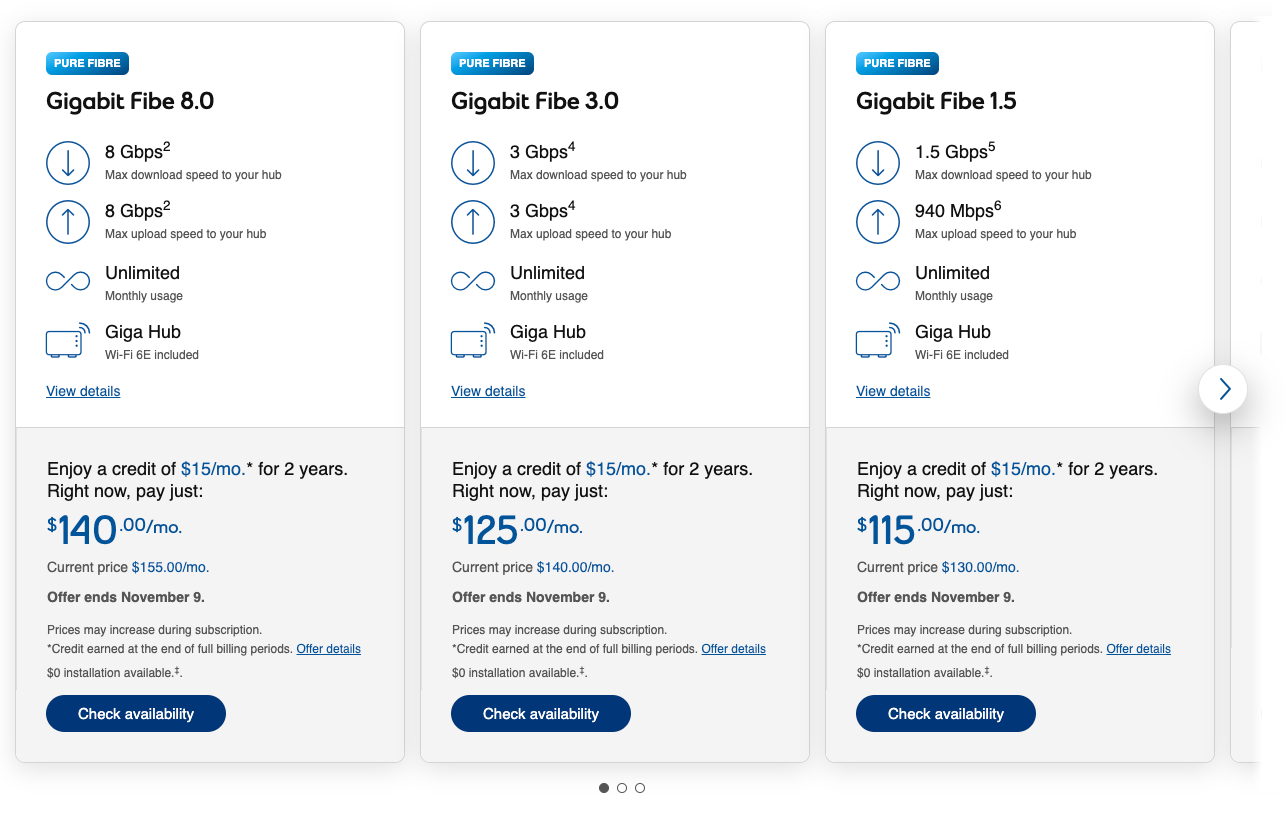Today the Canadian Radio-television and Telecommunications Commission (CRTC) released it's long awaited decision on Temporary access to fibre-to-the-premises facilities over aggregated wholesale high-speed access services. This decision is aimed to take action to address the declining competitive intensity in the wholesale high-speed access (HSA) services market, particularly in Ontario and Quebec. As I've blogged about before, the rise of fibre based services is one of the major factors in the slow death of the indy Canadian ISP. The CRTC even noted this in their decision, saying "In recent years, the Commission has noted declining competitive intensity in this industry. The number of Canadians who buy Internet services from independent wholesale-based competitors has fallen by 40%, even as the overall number of Internet subscribers in Canada has increased."
The CRTC's decision initially seems like a positive step toward revitalizing competition in the high-speed internet service market. Yet, upon closer examination, a stark contradiction emerges: the proposed wholesale rates exceed the retail rates of incumbent providers. This discrepancy begs the question: how can the CRTC expect to nurture competition when the playing field is inherently tilted against new market entrants?
As an example, the CRTC has set the rate in Ontario and Quebec for access to fibre access with speeds up to 1500 Mbps at $68.94, but that isn't the whole cost. There is also the $246 install fee, the cost of providing the CPE, the cost of the transport for the traffic, network costs, support costs, sales and marketing costs, infrastructure costs and more, meaning the true "cost" to a smaller provider would be closer to $90-$110 per month after all other costs are accounted for. Assuming they make a healthy margin this puts the indy ISPs retail price point at $115-$140 per month.
This price point puts the service pricing inline with the retail pricing from Bell.ca:

So the CRTC's decision seems like it makes sense, until you remember that Bell (and others) have a secret tool up their sleeve - flanker brands. Look at the pricing offered by Distributel, a wholly owned subsidiary of Bell:

Despite Distributel's "2-year promotional" pricing, which eventually reverts to $109.95, my January article "Flanker brands are killing independent ISPs" highlighted a critical consumer behavior: the allure of immediate savings often trumps long-term cost considerations, given the negligible 'switching cost' between ISPs. Given these factors, how can the CRTC expect independent ISPs to compete effectively with the proposed rates?
The CRTC has indicated that this decision is temporary and that rates may be adjusted following a broader review. However, the interim period is critical for the survival and strategic planning of new entrants. The uncertainty of future rates adds to the risk, making it challenging for competitors to develop long-term business plans and invest in infrastructure.
For the CRTC's decision to genuinely cultivate competition, a reassessment of the pricing strategy is imperative. Alternatively, the Competition Bureau must scrutinize the potentially predatory pricing tactics employed by flanker ISP brands. Wholesale rates must be sufficiently competitive to enable new entrants to offer services at market rates while maintaining operational sustainability. They should not be compelled to vie against flanker brands that offer pricing below cost.
Call to Action: Raise Your Voice for a Fair Internet Marketplace
As Canadians, we pride ourselves on fairness and choice. The internet service market should be no exception. The CRTC's recent decision has sparked a crucial conversation about the future of our internet services and the competitive landscape that supports them. However, this conversation is incomplete without your voice.
The upcoming public proceeding presents a pivotal opportunity for you, the consumers, and the very backbone of the Canadian internet market, to make your voices heard. It is your chance to influence the policies that will shape the competitive dynamics of our internet services for years to come.
Do not underestimate the power of collective consumer feedback. If you believe in a market that encourages diverse options, fair pricing, and innovative services, it's time to speak up. Whether you're an individual user, a small business owner, or simply a concerned citizen, your perspective is invaluable.
Here's how you can take action:
- Educate Yourself: Understand the implications of the CRTC's decision and how it affects you. Knowledge is power, and an informed public is the strongest advocate for change.
- Spread the Word: Talk to friends, family, and colleagues. Share this blog post and other resources. The more people are aware of the issue, the louder our voice will be.
- Submit Your Views: Visit the CRTC's website and use the public proceeding platform to submit your comments. Be clear, be concise, and articulate how the current decision impacts you or your community.
- Stay Engaged: Follow the proceedings, participate in discussions, and keep the dialogue going. Regulatory bodies like the CRTC are more responsive when they see sustained public interest and engagement.
The deadline for submissions will be announced soon, and it is crucial that the CRTC hears from a broad spectrum of Canadians. This is not just about the present; it's about setting a precedent for the future. Let's ensure that our market remains vibrant, competitive, and fair.
Together, we can advocate for a decision that truly reflects the needs and wants of Canadian internet users. Your input can drive change. Make it count.

Comments